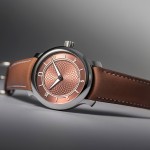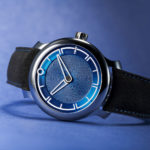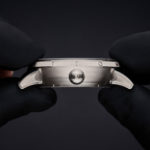A GMT with Teeth: The Ming 37.11 Odyssey Bites Back
Ming's popular diver gets a caller GMT upgrade.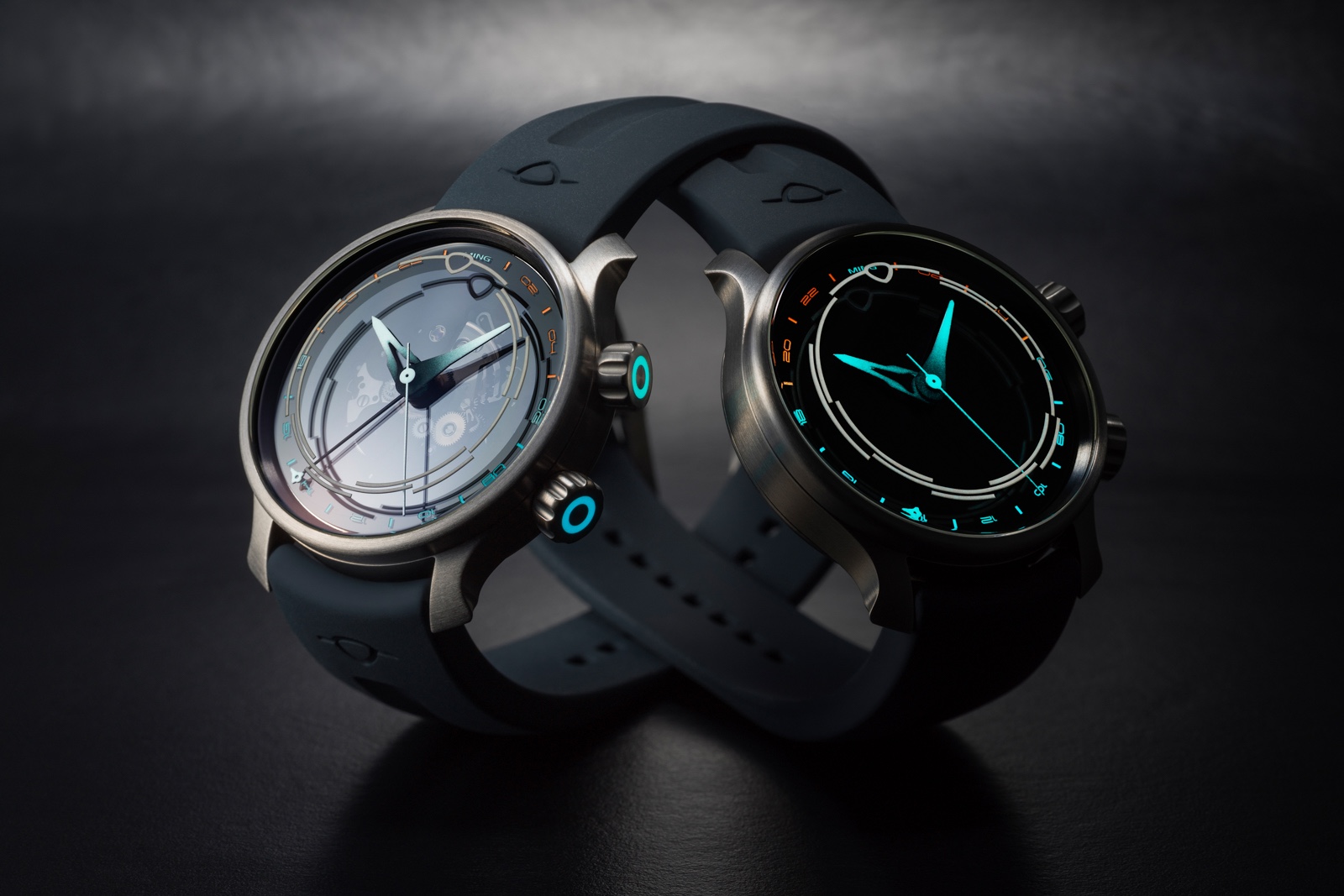
Ming’s latest release, the 37.11 Odyssey, builds on the brand’s reputation for luminous, multi-layered dials and inventive designs. The Odyssey takes the visual depth seen in the Bluefin and Uni to the next level with a smoked sapphire dial that reveals the movement beneath, paired with shark-tooth hands and a multi-coloured luminous display.
Despite its futuristic appearance, the Odyssey remains a practical travel companion. The compact 38 mm titanium case weighs just 42 g and offers 300 m of water resistance, while the Sellita SW330.M2 movement inside provides caller GMT functionality (with a twist). Available on a rubber strap, a titanium bracelet, or the brand’s new 3D-printed Polymesh strap, the Odyssey showcases Ming’s evolution from a design-driven micro-brand to a mature independent watchmaker with its own distinct language and value proposition.

Initial thoughts
The Odyssey is appealing because it plays to the brand’s strengths with regard to multi-layered, semi-transparent luminous dials. Like many of Ming’s best watches, including the similarly constructed Bluefin and Uni, the Odyssey provides a pleasing parallax effect thanks to the presence of luminous material on both the dial itself, as well as the underside of the sapphire crystal.
The Odyssey takes the layered look even further by revealing hints of the movement through a smoked sapphire crystal dial. The movement is a typical Sellita GMT calibre, customised for Ming with anthracite-coated plates and open-worked bridges.
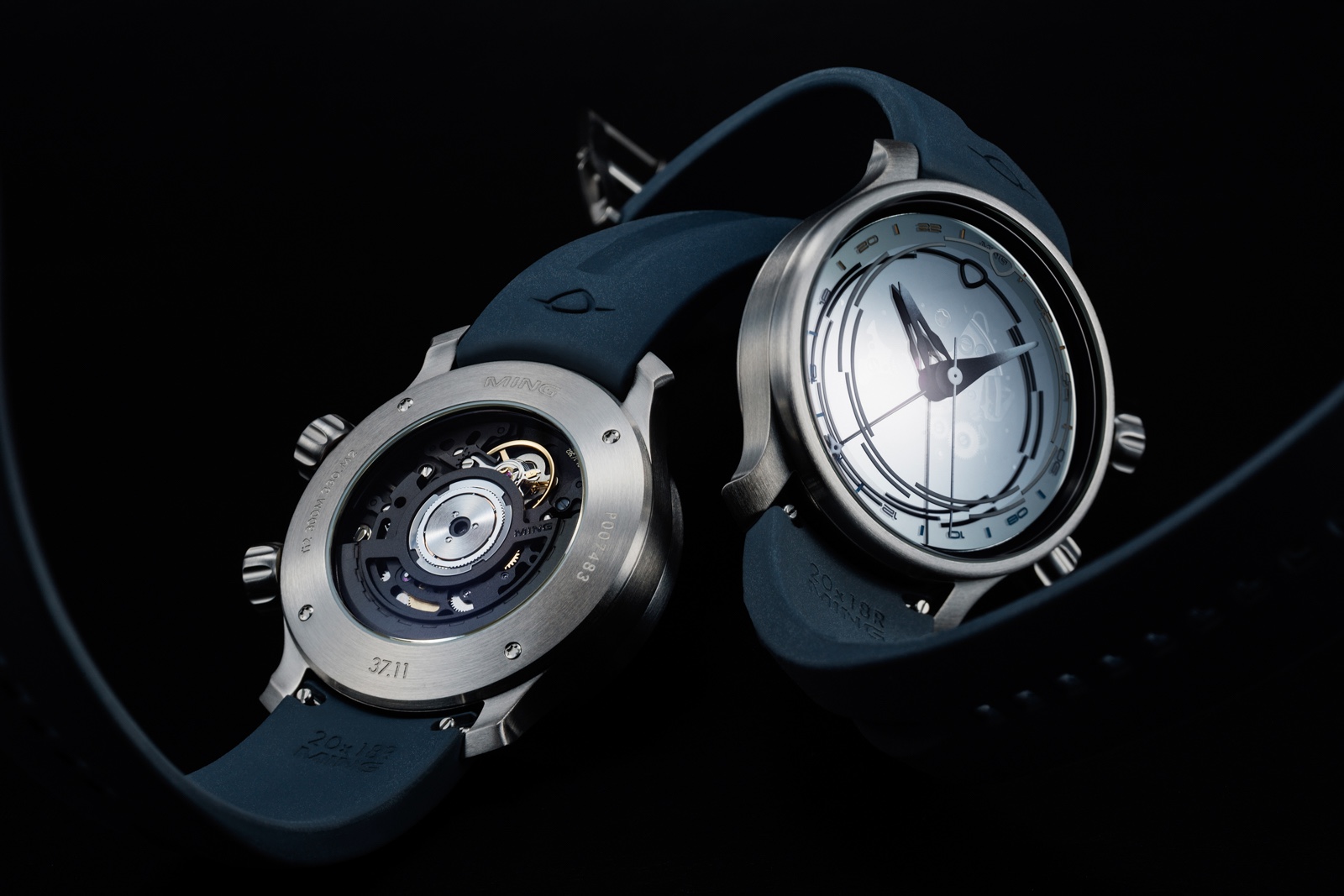
The Odyssey also weighs just 42 g (not including the strap), benefiting from Ming’s emerging expertise in ultralight watches. In this case, the light weight is thanks to a compact 38 mm case made of grade 2 titanium, also known as natural titanium. While this material is fairly prone to pick up scratches, the thin bezel and fully brushed finish mean that scratches shouldn’t really change the character of the watch all that much.
The dual-crown case design can be seen as an homage to the Super Compressor format, but it’s more forward-looking than nostalgic; Ming has created its own dynamic design language that manages to be futuristic without looking gimmicky. And it does more than just look good—the crown at two o’clock, which controls the rotating dial, can be operated underwater. It’s hard to think of a use case for this functionality, short of recreating the iconic swim of Mercedes Gleitze across the English Channel, but it says a lot about the security of the case construction.
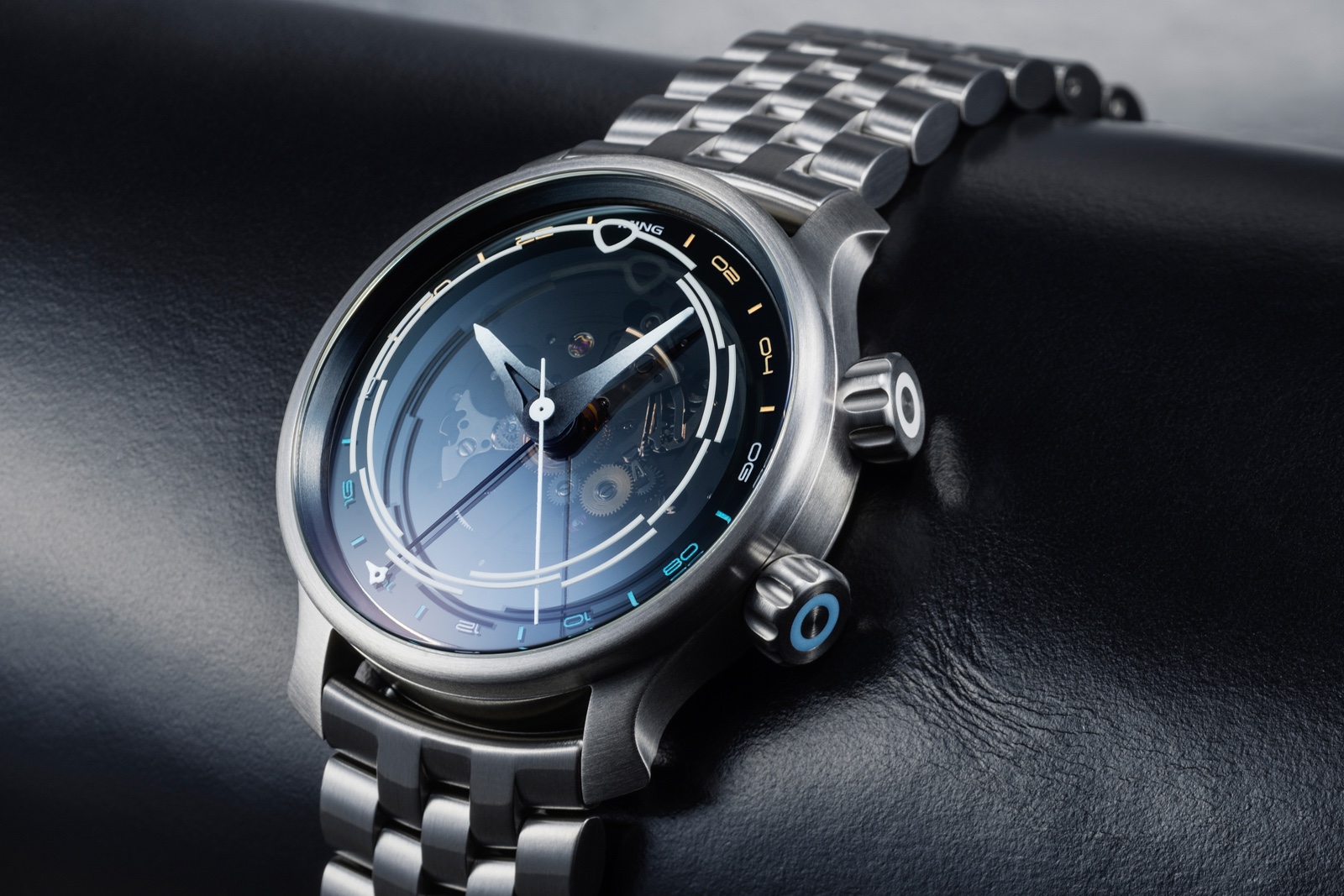
In terms of value, it’s clear that Ming has been moving upmarket since its debut. At just under CHF5,000 on a rubber strap, it’s a lot of money for a simple Sellita-powered GMT. But to reduce the value equation to specs largely misses the point of the Odyssey, and Ming’s watches in general. In a segment crowded with lookalike vintage reissues and ’70s-inspired integrated bracelets, Ming’s deft design work differentiates the brand and its watches.
A GMT with teeth
The Odyssey rehashes several themes we’ve seen before from Ming, from the mirror-like dial to the bright ‘Polar White’ lume on the underside of the crystal. But the shark tooth-looking hands feature gradient lume, which is heavier towards the tip. This is a first for the brand, and it glows brighter than one might expect, even on toward the base of the hand that appears un-lumed.

The hands sit atop a semi-opaque sapphire crystal dial that rotates, effectively merging the dial and the inner rotating bezel common to watches with this kind of construction. The rotating dial does preclude the option for a date window, but it’s a worthwhile sacrifice given the novelty of the effect. The outer edge of the dial carries lumed markings for the 24 hours, read against an independently adjustable hand.
The daytime hour markers and the brand wordmark are lumed in a greenish-blue hue that matches the hands, while the nighttime hours are applied in a striking shade of orange. This is an area where the design arguably gets in the way of functionality a bit, since anecdotal evidence suggests that red and orange colours of Super-LumiNova tend to not glow as brightly or for as long as cooler tones like green and blue. That said, I can understand the choice because it looks extremely cool, especially in the pleasing, modern typeface used for the glowing numerals.
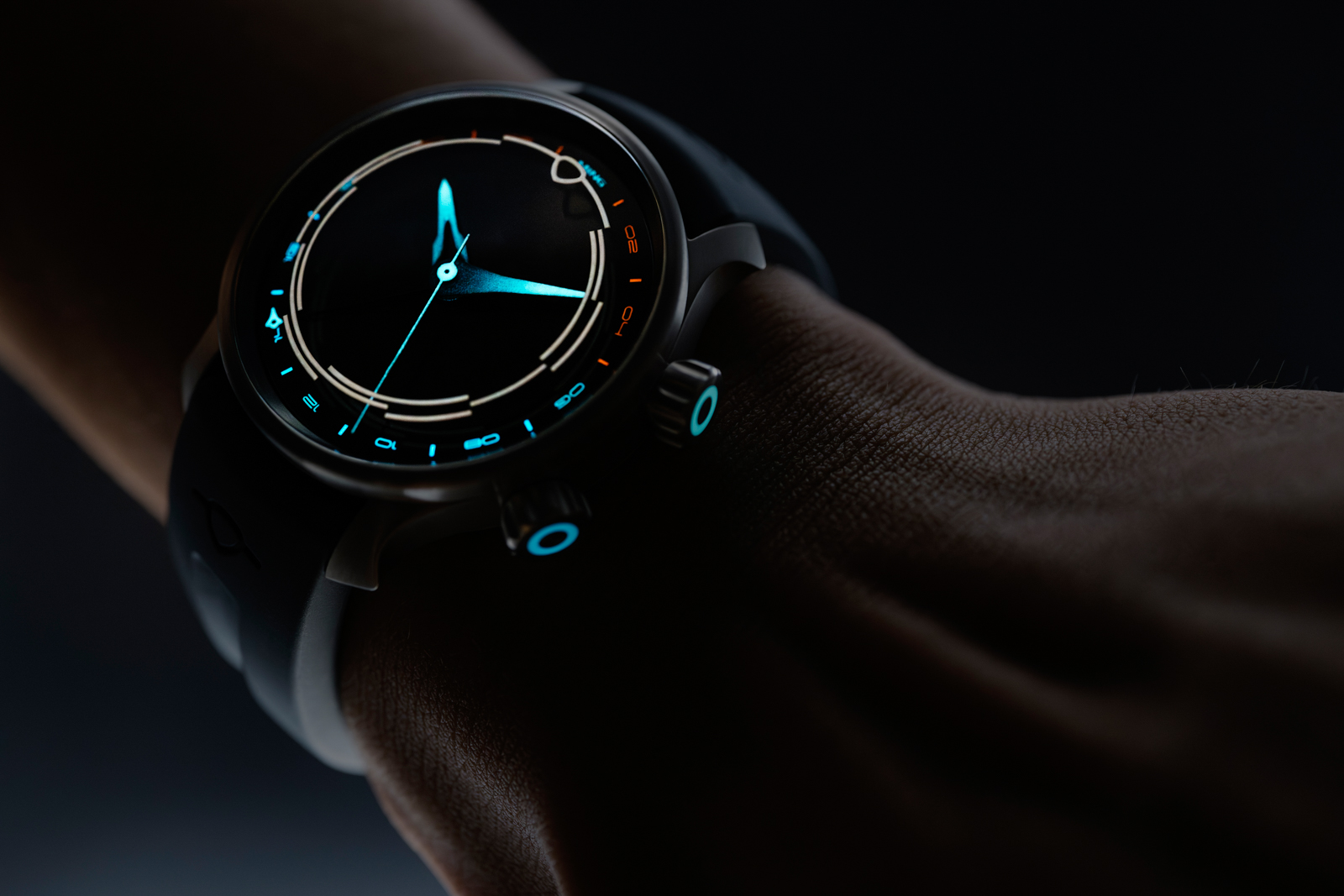
The under-dial works of industrial movements like this aren’t usually worth revealing; Ming clearly understands this and seems to have hit the right note with the semi-opaque dial treatment, which appears nearly solid at some angles, and reveals glimpses of the mechanism for the independently adjustable 24-hour second time zone indicator at others. In other words, the dial helps the utilitarian movement look good.
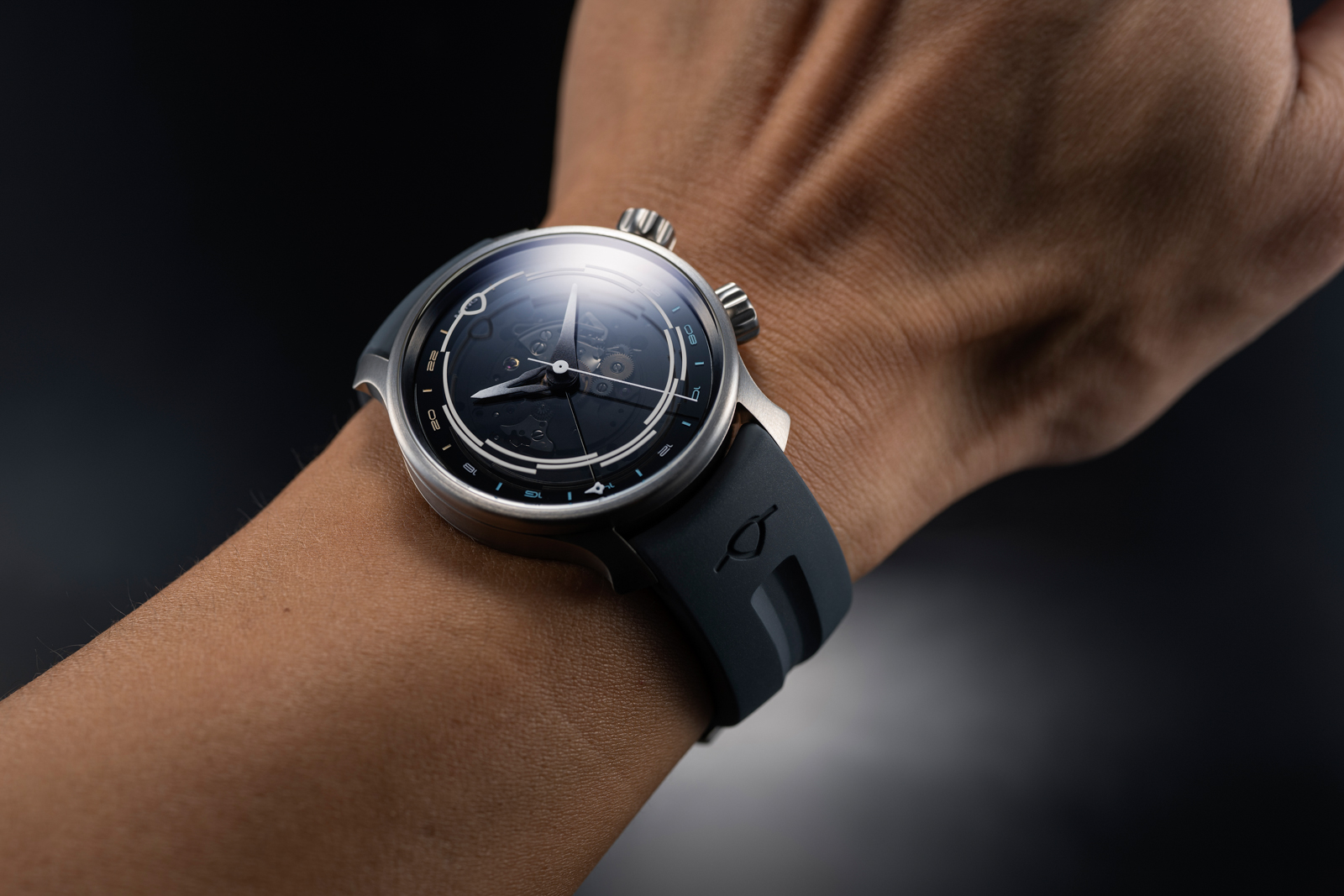
The rotating scale means the wearer has a few different options for using the caller GMT functionality offered by the Sellita SW330.M2. To monitor a second time zone, the user can simply turn the crown at two o’clock to rotate the dial until the current hour in the second time zone lines up with the GMT hand; this is probably the easiest method since the dial rotates in both directions and offers 24 distinct clicks per rotation. It’s also foolproof, since the crown is fixed (it doesn’t pull out) and doesn’t interfere with the movement. This crown can even be adjusted underwater or with wet hands, which adds to its user-friendliness.
Alternatively, the dial can be left in place, while the GMT hand is jumped forward in one-hour increments using the screw-down time-setting crown at four o’clock. Conveniently, the time-setting crown incorporates a thoughtful detail: a coloured flange that indicates when the crown is unscrewed.
A choice of straps
There are three available quick-release strap options suited to the Odyssey’s 20 mm lugs, and the watch can be procured with any of them. The brand’s five-link Universal titanium bracelet is the most traditional bracelet in the mix. For collectors who favour wearing watches on bracelets because of their substantial feel, this is the one to get. That said, the visual mass of the bracelet changes the impression of the watch, for better or worse.
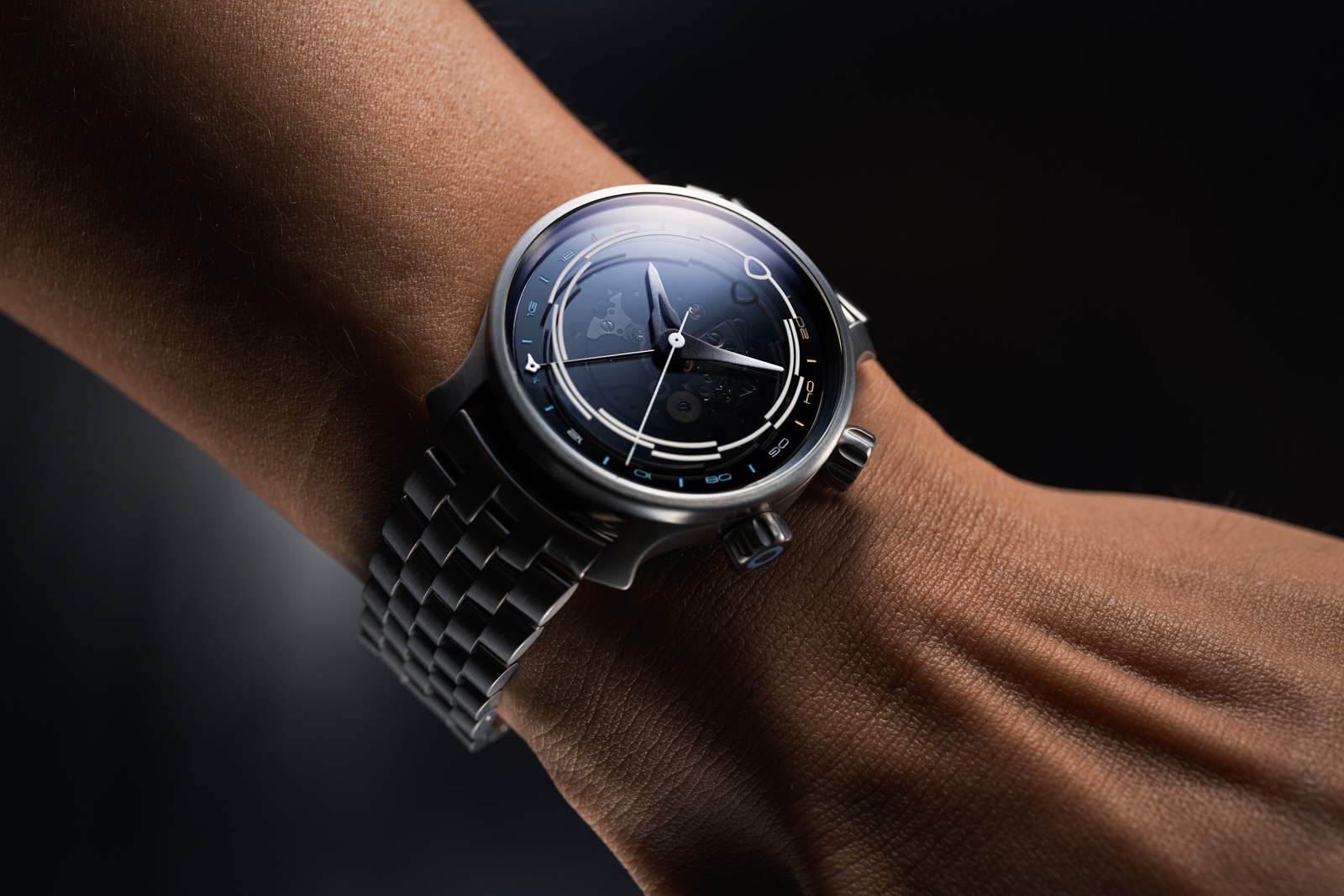
Another option is Ming’s recently announced Polymesh strap, which is made of 3D-printed grade 5 titanium. Technically a metal bracelet with 1,693 articulating links, Polymesh feels like a strap due to its extreme flexibility and light weight. But the most interesting thing about it is the process by which it is made. Instead of making individual links and pinning them together, as is the norm, all of the bracelet’s articulating components, including the links and the buckle, are made as a single piece in one continuous additive manufacturing process that sinters titanium powder using a laser.
The Odyssey is Ming’s first new watch since the launch of Polymesh, which debuted as a standalone product. The Odyssey’s pricing reveals that the brand is offering the Polymesh strap at a reduced price when paired with a watch as opposed to on its own, as is common practice in the industry.
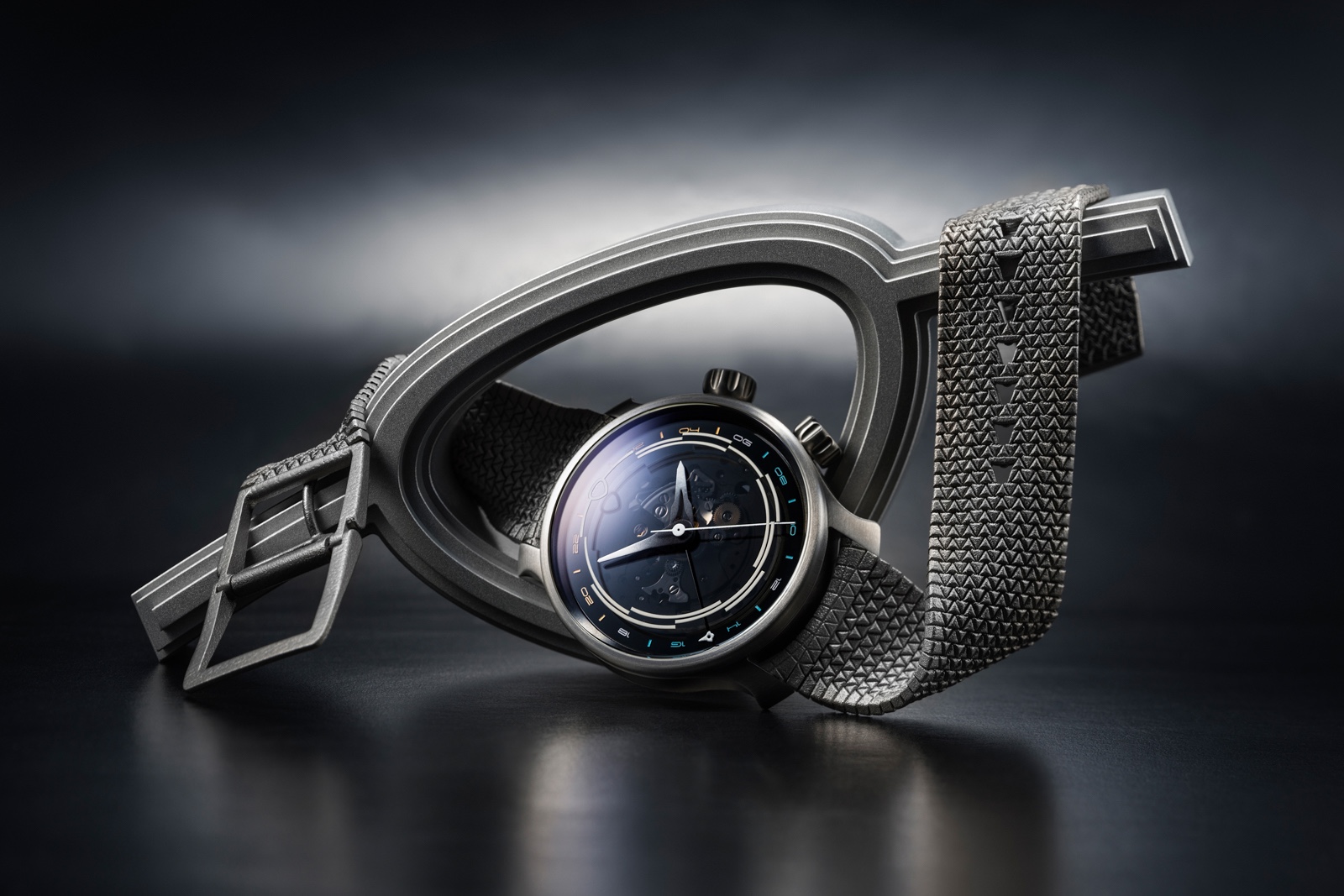
As interesting as the Polymesh bracelet is, the slick and supple FKM rubber strap might be my pick, not only because it keeps the cost down but because it offers more visual contrast with the case. The rubber strap is the same model used for the Bluefin, which is remarkably soft and comfortable, with a tapered thickness that allows the tail end of the strap to tuck comfortably inside through a dedicated opening in the clasp.
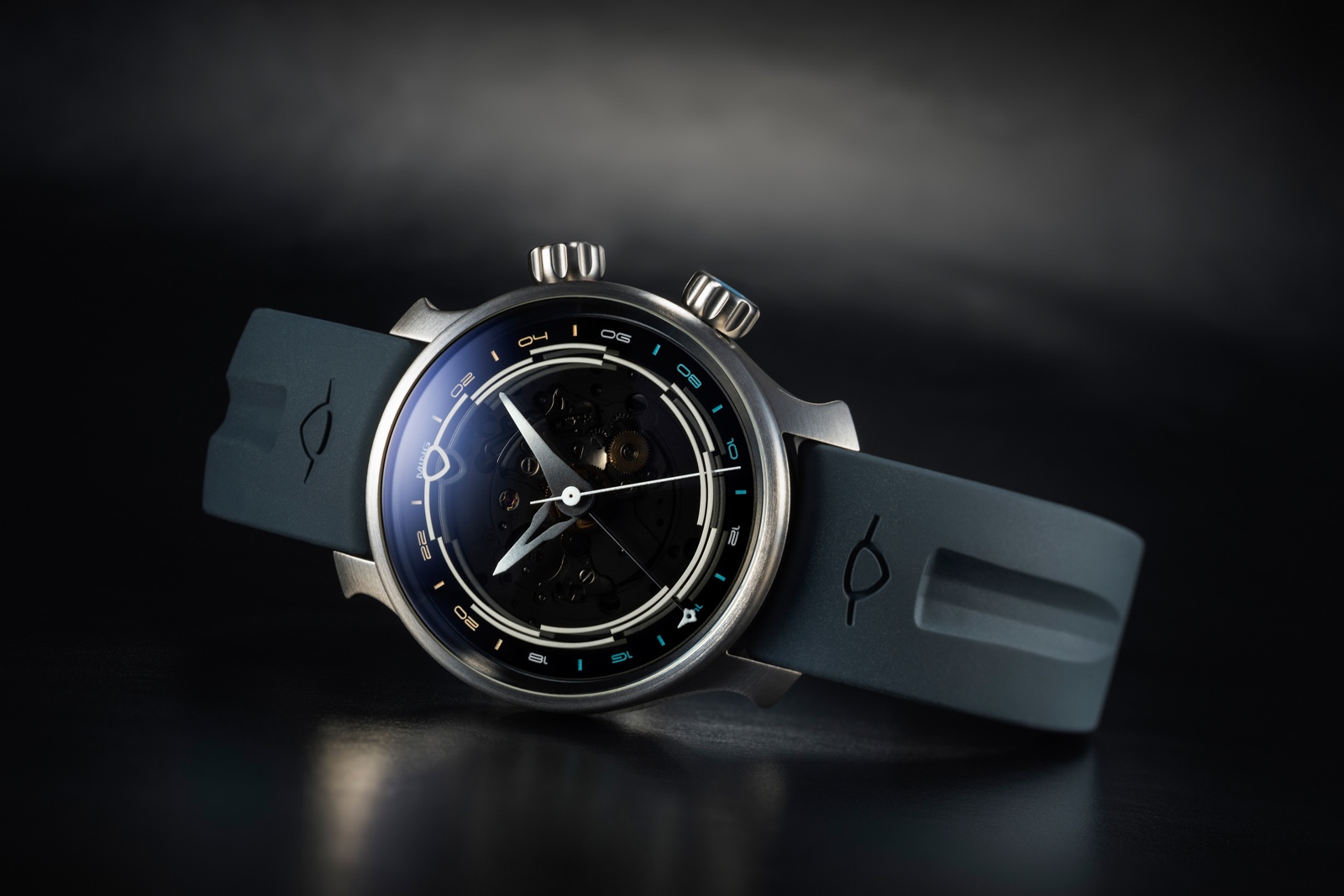
Calling all GMT lovers
The Odyssey’s smoked sapphire crystal dial shows off the movement inside, but doesn’t reveal enough detail for at-a-glance identification. Flipping the watch over, the Sellita SW330.M2 can be seen through a sapphire crystal window in the titanium case back. Functionally it’s a typical Sellita caller GMT movement, but the dark-coloured plates and bridges indicate that it’s a special order from Ming.

Pulling the four o’clock crown out to the first notch allows the hour hand to be jumped forward in one hour steps; turning the crown the opposite way likely does nothing, since this is normally how the date is adjusted on most Sellita GMT movements thus equipped. In the case of the Odyssey, the date functionality has been deleted to accommodate the rotating dial functionality.
The GMT mechanism is efficiently packaged, so the SW330.M2 is only about 0.5 mm thicker than the time-only SW300 found in the Bluefin and Uni. The extra thickness isn’t much, but it has to come from somewhere. Ming has opted to maintain the same exterior case dimensions and take the extra room from the thickness of the crystal and case back, which explains why the Odyssey is rated to ‘just’ 300 m compared to the 600 m rating of its sibling divers.
Key facts and price
Ming 37.11 Odyssey
Diameter: 38 mm
Height: 12.6 mm
Material: Titanium
Crystal: Sapphire
Water resistance: 300 m
Movement: Sellita SW330.M2 customised for Ming
Functions: Hours, minutes, seconds, GMT
Winding: Automatic
Frequency: 28,800 beats per hour (4 Hz)
Power reserve: 50 hours
Strap: Black FKM rubber, titanium bracelet, or titanium Polymesh strap
Limited edition: No
Availability: Direct from Ming and authorised retailers
Price: CHF4,950 on rubber strap, CHF5,500 on titanium universal bracelet, or CHF5,950 on titanium Polymesh strap, excluding taxes
For more, visit ming.watch
Back to top.



